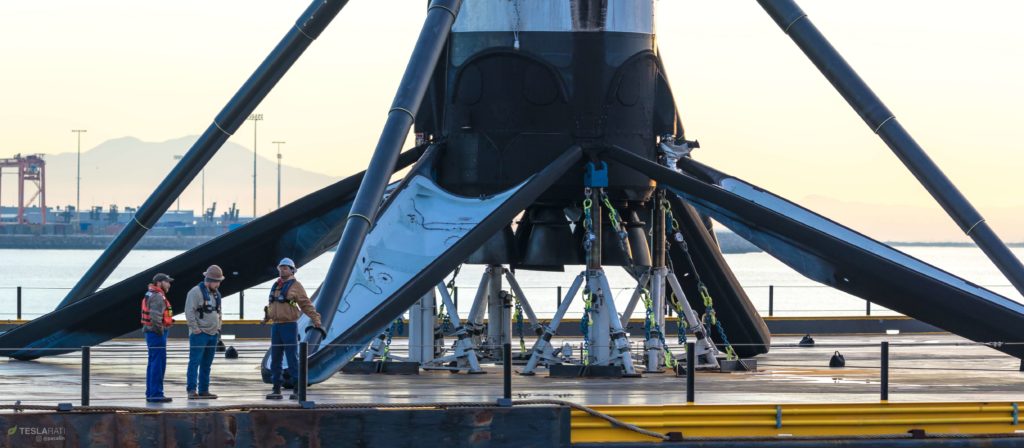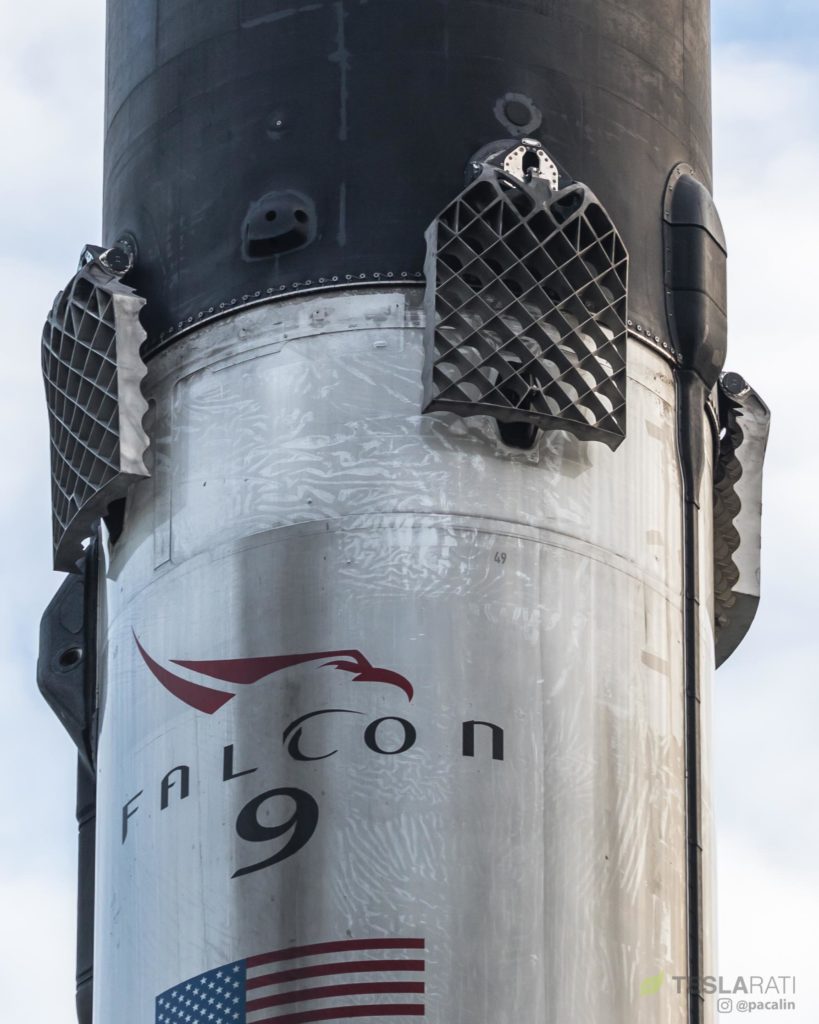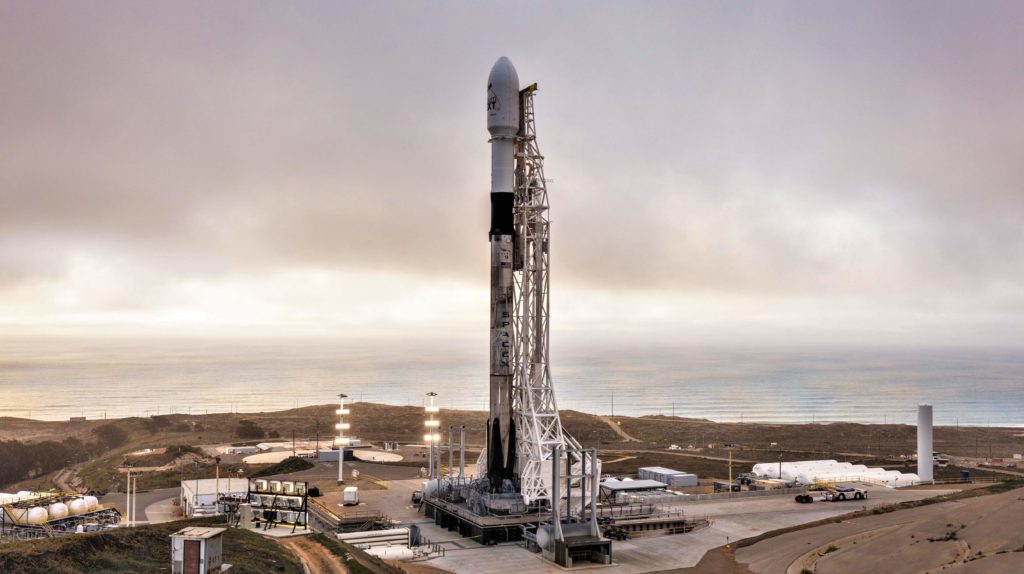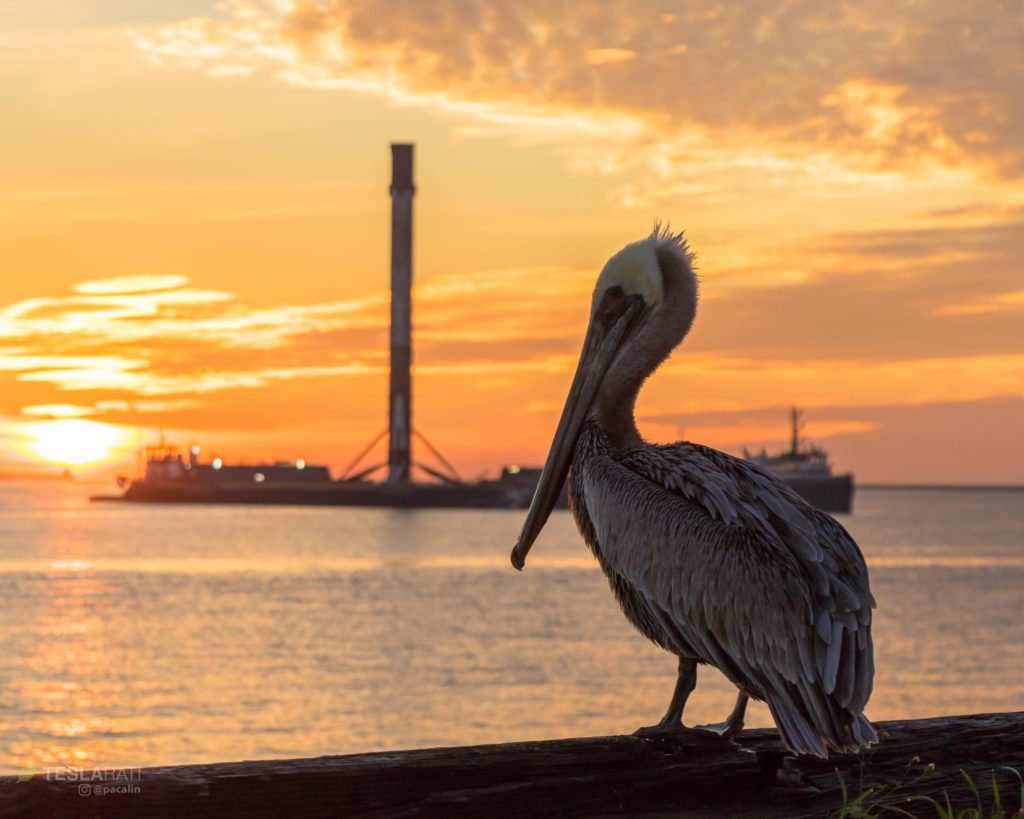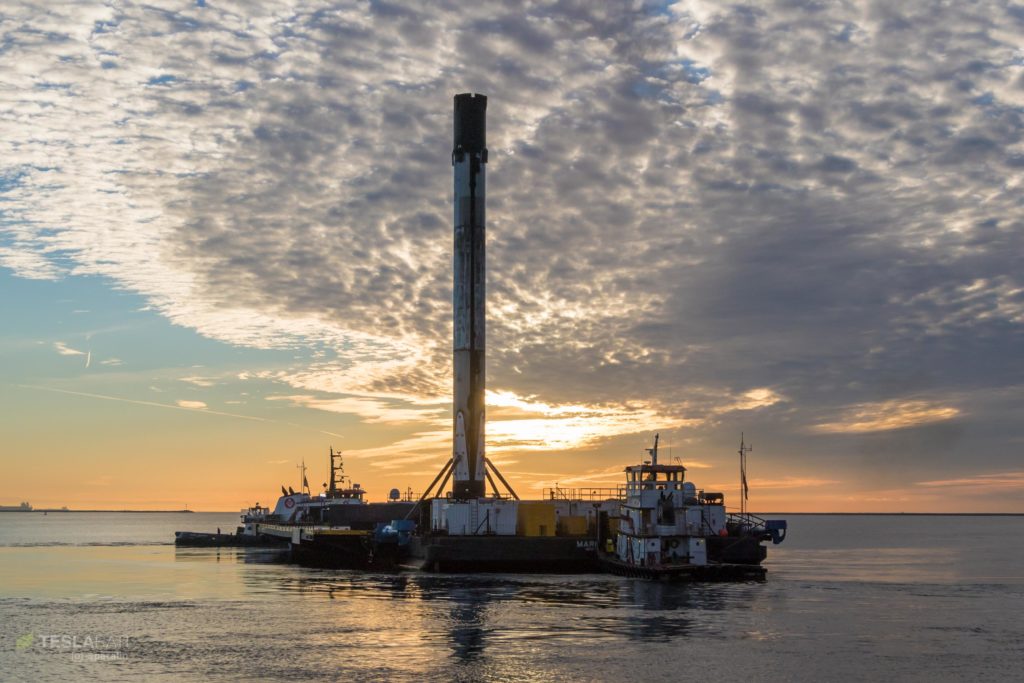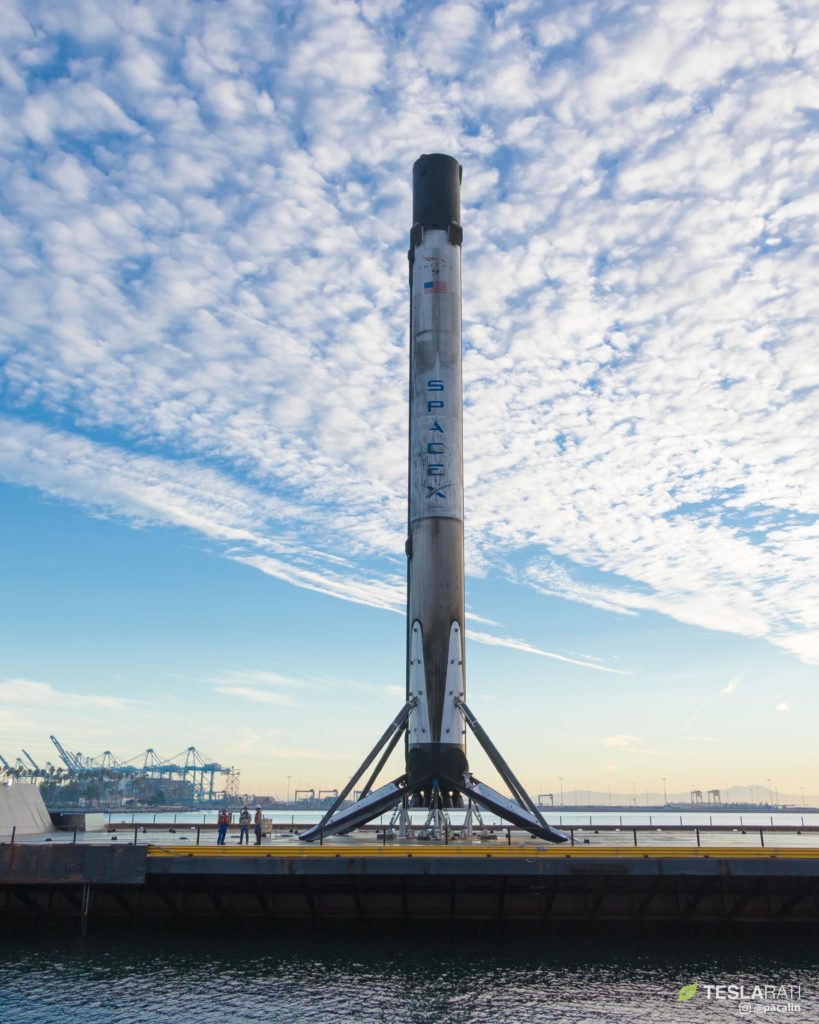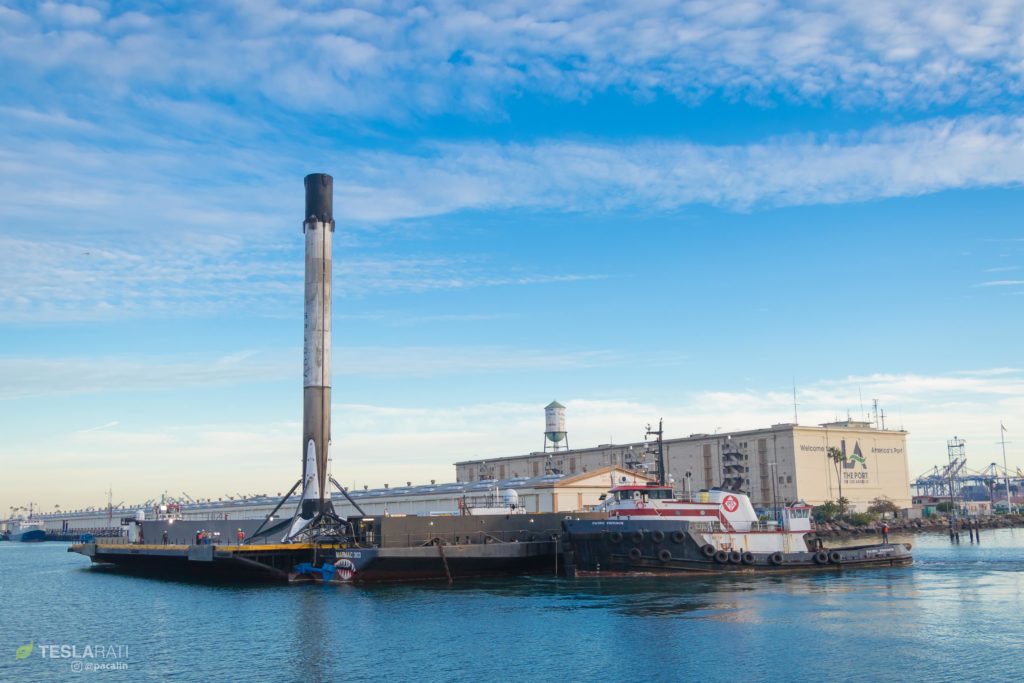
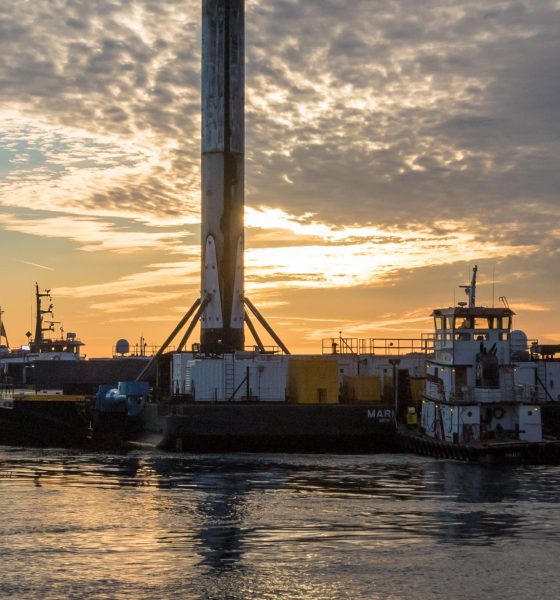
News
SpaceX Falcon 9 Block 5 booster ends launch #2 with spectacular dawn return
SpaceX Falcon 9 booster B1049 has completed its second successful launch and landing with a spectacular dawn return to Port of Los Angeles, where engineers and technicians will work to remove the rocket’s grid fins and landing legs and prepare the vehicle for transport to the company’s Hawthorne, CA factory and refurbishment facilities.
Once post-recovery processing is complete and B1049 is safe and snug inside one of SpaceX’s refurbishment facilities, the booster can be expected to be ready to perform its next (third) orbital-class mission perhaps just 2-3 months from now, whether or not there is a mission that needs its support.
Just Read the Instructions has now docked, carrying twice-flown Iridium-8 booster. Beautiful sunrise arrival. #spacex pic.twitter.com/OAi77wm3XT
— Pauline Acalin (@w00ki33) January 13, 2019
Just ~48 hours after the Block 5 booster’s second successful launch and landing, this time aboard drone ship Just Read The Instructions (JRTI) after supporting the historic Iridium-8 mission, JRTI pulled into Port of Los Angeles with Falcon 9 in tow, backlit by a picturesque California sunrise. In September 2018, the same booster (B1049) successfully completed its launch debut from SpaceX’s LC-40 launch pad in Cape Canaveral, Florida before landing safely aboard drone ship Of Course I Still Love You (OCISLY).
This marks the second time ever that a Falcon 9 booster has launched from both coasts (Cape Canaveral, FL and Vandenberg, CA) and landed on both SpaceX drone ships (JRTI and OCISLY), an event that will likely become increasingly common as the company’s growing fleet of Falcon 9 Block 5 boosters become increasingly flexible and interchangeable. It’s also equally possible that – over time – a sort of regional fleet of Falcon 9s will ultimately accumulate at each of SpaceX’s three launch pads, ensuring that there is always a rocket ready and waiting to launch a customer payload with short notice and minimal production or refurbishment-related delays.
- Falcon 9 B1049 and a few SpaceX recovery technicians serve as an excellent since of scale for launch photos. (Pauline Acalin)
- Falcon 9 B1049 returned to Port of Los Angeles after its second successful launch and landing in four months. (Pauline Acalin)
- Falcon 9 B1049 seen vertical at SLC-4E prior to its second launch, the eighth and final Iridium NEXT mission. (SpaceX)
Among many of Falcon 9’s almost sculpture-like qualities, Teslarati photographer Pauline Acalin’s photos of the booster’s return exemplify just how reliably unperturbed Block 5 appears after performing multiple orbital-class launches, far from a rocket that traveled to ~90 km (~56 mi) while reaching speeds of 1.9 kilometers per second (6830 km/h, 4300 mph). SpaceX now reliably reuses Falcon 9’s titanium grid fins and landing legs with little to no refurbishment or touching up between launches and should eventually be able to retract the rocket’s legs after recovery, further cutting down on processing and refurbishment times.
Greater reusability, greater reliability?
As of today, it’s unclear how big of a role Falcon 9 Block 5 booster refurbishment has played into several hardware-readiness-related delays to several recent flight-proven Falcon 9 launches (SSO-A, SAOCOM 1A, and Iridium-8), but it is ultimately a fundamental reality of all manufacturing that rushing or ‘expediting’ work will typically hurt product quality and reliability and generally widen the cracks that mistakes can slip through. Interestingly, having a truly large fleet of flight-proven Falcon 9 Block 5 rockets on hand could dramatically improve the overall launch-readiness of Falcon 9 and Falcon Heavy and minimize chances of processing delays across the board.
SpaceX employees may already be to a point where they can plausible take stock of the company’s already-significant fleet of flight-proven Falcon 9s (B1046-B1049) to decide which booster is closest to launch-readiness before assigning it to a given mission. With four proven boosters on hand as of January 2019, options are fairly limited and regionality is likely to factor heavily into which booster launches which mission – there is no real cushion if problems arise with a given rocket or its preceding launch suffers its own delays. However, once that Falcon fleet grows to something like 10 or 15 booster, SpaceX could conceivably be able to guarantee booster availability regardless of prior launch delays or a given rocket’s condition after landing.
- (Pauline Acalin)
- A bittersweet sunrise as Falcon 9 B1049 arrives in port. (Pauline Acalin)
- (Pauline Acalin)
- (Pauline Acalin)
This may well be far less sexy than SpaceX’s ultimate goal of drop-of-the-pin, 24-hour reusability for Falcon and BFR boosters, but the fundamental fact of the matter is that the company may well be able to derive a vast majority of that practice’s value by simply having a large, well-kept fleet of Falcon 9 boosters that are at least moderately reusable. For a hefty chunk of the probable near-term future, a large fleet of rockets each capable of launching every 30-60 days would likely be able to support launch cadences that are currently unprecedented for a single company or rocket (i.e. dozens of launches per year).
Time is money, of course, so minimizing the turnaround time of Falcon boosters will ultimately remain a major priority, especially as the prospect of Starlink launches loom.
For prompt updates, on-the-ground perspectives, and unique glimpses of SpaceX’s rocket recovery fleet check out our brand new LaunchPad and LandingZone newsletters!

News
Tesla finishes its biggest Supercharger ever with 168 stalls
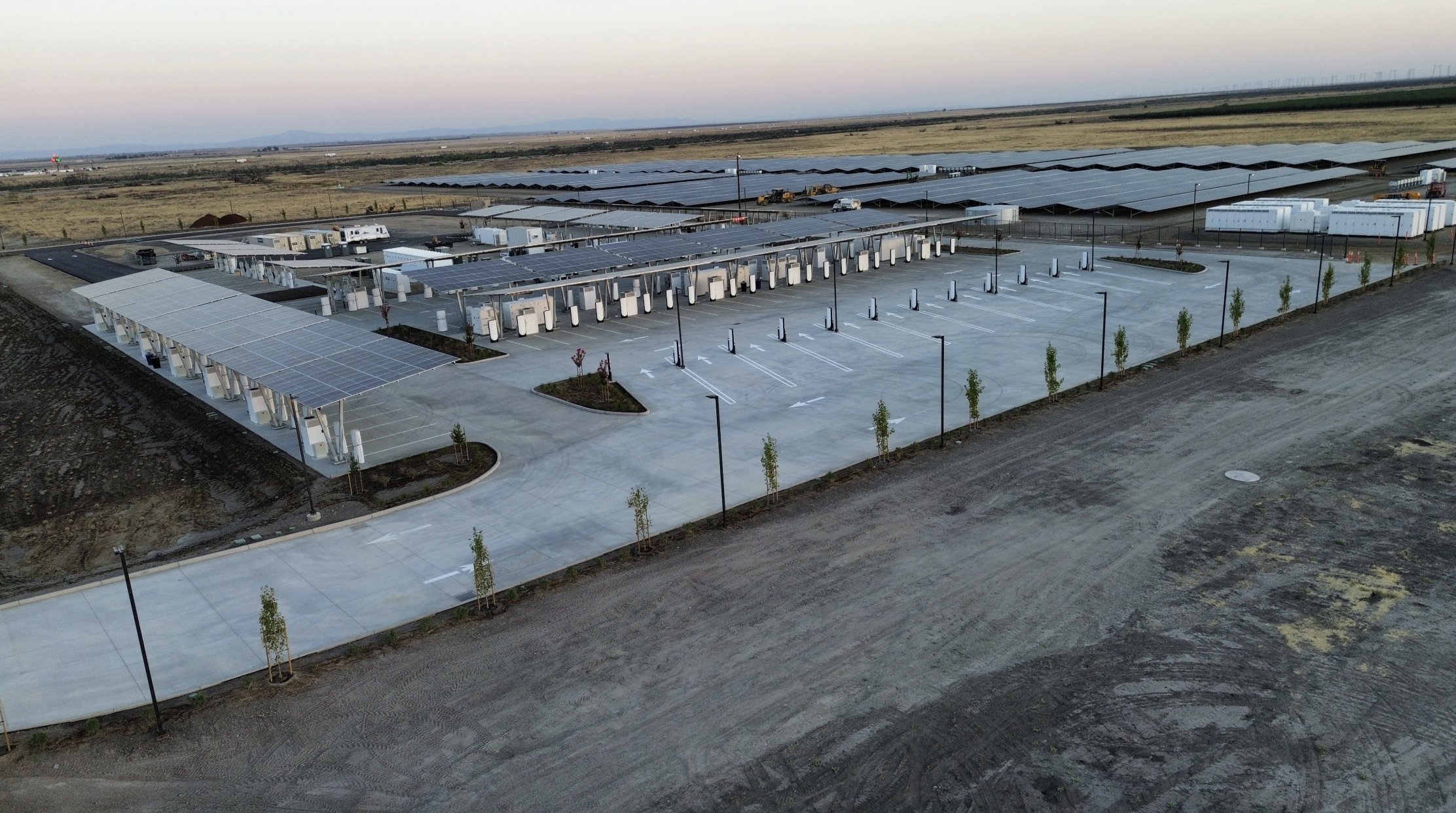
Tesla has finished construction at its biggest Supercharger ever in Lost Hills, California, and all 168 stalls are officially open as of today.
After several years of development, the company has officially announced that the Lost Hills Supercharger, known as Project Oasis, is officially open with 168 stalls active and available to drivers.
Tesla announced the completion of the Lost Hills Supercharger on Tuesday, showing off the site, which is powered by 10 Megapack batteries for storage and is completely independent of the grid, as it has 11 MW of solar panels bringing energy to the massive Battery Energy Storage System (BESS).
All 168 Stalls at the Tesla Supercharger in Lost Hills, California are officially open! pic.twitter.com/eo9xmZyUNB
— TESLARATI (@Teslarati) November 25, 2025
This is the largest Supercharger in the world and opens just in time for the Thanksgiving holiday, which is the most-traveled weekend of the year in the United States.
Spanning across 30 acres, it was partially opened back in July 2025 as Tesla opened just 84 of the 168 stalls at the site. However, Tesla finished certifying the site recently, which enabled the Supercharger to open up completely.
The site generates roughly 20 GWh of energy annually, which is enough to power roughly 1,700 homes. The launch of this site specifically is massive for the company as it plans to launch more Superchargers in more rural areas, making charging more available for cross-country rides that require stops in more remote regions of the United States.
This is perhaps the only weak point of Tesla’s massive charging infrastructure.
It has some features that are also extremely welcome for some owners, including things like pull-through stalls for those who tow, an idea that was extremely popular following the launch of the Cybertruck.
Tesla has over 70,000 active Superchargers across the world. The company has also made efforts to create unique experiences at some of the stops, most notably with its Tesla Diner, located on Santa Monica Boulevard in Los Angeles.
That Supercharger has two massive drive-in movie theaters and will soon transition to a full-service restaurant following the departure of its executive chef, Eric Greenspan.
Elon Musk
Elon Musk proposes Grok 5 vs world’s best League of Legends team match
Musk’s proposal has received positive reception from professional players and Riot Games alike.

Elon Musk has proposed a high-profile gaming challenge for xAI’s upcoming Grok 5. As per Musk, it would be interesting to see if the large language model could beat the world’ best human League of Legends team with specific constraints.
Musk’s proposal has received positive reception from professional players and Riot Games alike, suggesting that the exciting exhibition match might indeed happen.
Musk outlines restrictions for Grok
In his post on X, Musk detailed constraints to keep the match competitive, including limiting Grok to human-level reaction times, human-speed clicking, and viewing the game only through a camera feed with standard 20/20 vision. The idea quickly circulated across the esports community, drawing commentary from former pros and AI researchers, as noted in a Dexerto report.
Former League pro Eugene “Pobelter” Park expressed enthusiasm, offering to help Musk’s team and noting the unique comparison to past AI-versus-human breakthroughs, such as OpenAI’s Dota 2 bots. AI researcher Oriol Vinyals, who previously reached Grandmaster rank in StarCraft, suggested testing Grok in RTS gameplay as well.
Musk welcomed the idea, even responding positively to Vinyals’ comment that it would be nice to see Optimus operate the mouse and keyboard.
Pros debate Grok’s chances, T1 and Riot show interest
Reactions weren’t universally optimistic. Former professional mid-laner Joedat “Voyboy” Esfahani argued that even with Grok’s rapid learning capabilities, League of Legends requires deep synergy, game-state interpretation, and team coordination that may be difficult for AI to master at top competitive levels. Yiliang “Doublelift” Peng was similarly skeptical, publicly stating he doubted Grok could beat T1, or even himself, and jokingly promised to shave his head if Grok managed to win.
T1, however, embraced the proposal, responding with a GIF of Faker and the message “We are ready,” signaling their willingness to participate. Riot Games itself also reacted, with co-founder Marc Merrill replying to Musk with “let’s discuss.” Needless to say, it appears that Riot Games in onboard with the idea.
Though no match has been confirmed, interest from players, teams, and Riot suggests the concept could materialize into a landmark AI-versus-human matchup, potentially becoming one of the most viewed League of Legends events in history. The fact that Grok 5 will be constrained to human limits would definitely add an interesting dimension to the matchup, as it could truly demonstrate how human-like the large language model could be like in real-time scenarios.
Tesla has passed a key milestone, and it was one that CEO Elon Musk initially mentioned more than nine years ago when he published Master Plan, Part Deux.
As per Tesla China in a post on its official Weibo account, the company’s Autopilot system has accumulated over 10 billion kilometers of real-world driving experience.
Tesla China’s subtle, but huge announcement
In its Weibo post, Tesla China announced that the company’s Autopilot system has accumulated 10 billion kilometers of driving experience. “In this respect, Tesla vehicles equipped with Autopilot technology can be considered to have the world’s most experienced and seasoned driver.”
Tesla AI’s handle on Weibo also highlighted a key advantage of the company’s self-driving system. “It will never drive under the influence of alcohol, be distracted, or be fatigued,” the team wrote. “We believe that advancements in Autopilot technology will save more lives.”
Tesla China did not clarify exactly what it meant by “Autopilot” in its Weibo post, though the company’s intense focus on FSD over the past years suggests that the term includes miles that were driven by FSD (Beta) and Full Self-Driving (Supervised). Either way, 10 billion cumulative miles of real-world data is something that few, if any, competitors could compete with.
Advertisement
–>
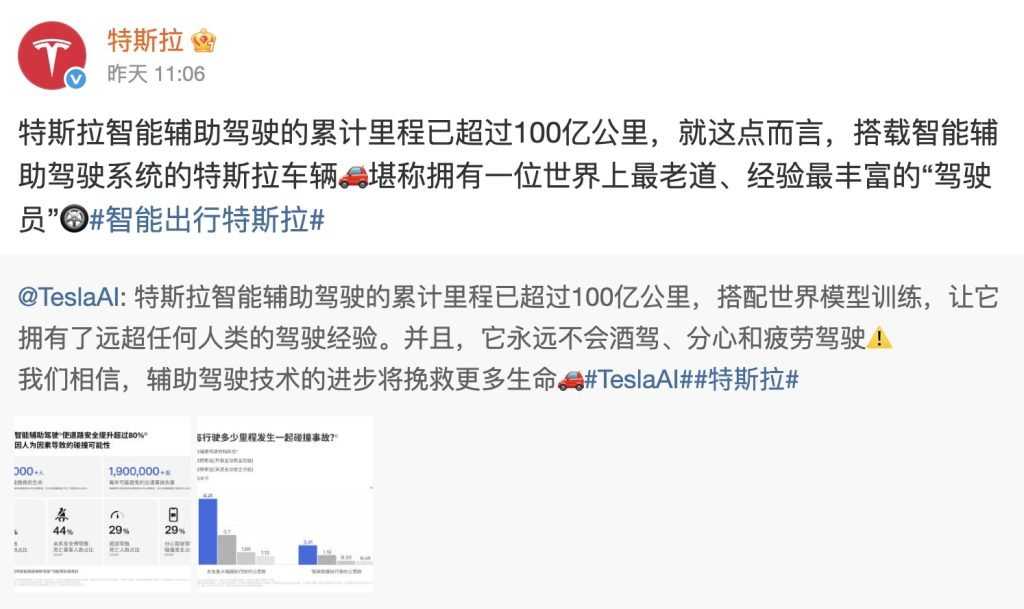
Elon Musk’s 10-billion-km estimate, way back in 2016
When Elon Musk published Master Plan Part Deux, he outlined his vision for the company’s autonomous driving system. At the time, Autopilot was still very new, though Musk was already envisioning how the system could get regulatory approval worldwide. He estimated that worldwide regulatory approval will probably require around 10 billion miles of real-world driving data, which was an impossible-sounding amount at the time.
“Even once the software is highly refined and far better than the average human driver, there will still be a significant time gap, varying widely by jurisdiction, before true self-driving is approved by regulators. We expect that worldwide regulatory approval will require something on the order of 6 billion miles (10 billion km). Current fleet learning is happening at just over 3 million miles (5 million km) per day,” Musk wrote.
It’s quite interesting but Tesla is indeed getting regulatory approval for FSD (Supervised) at a steady pace today, at a time when 10 billion miles of data has been achieved. The system has been active in the United States and has since been rolled out to other countries such as Australia, New Zealand, China, and, more recently, South Korea. Expectations are high that Tesla could secure FSD approval in Europe sometime next year as well.
News
Elon Musk’s Boring Company reveals Prufrock TBM’s most disruptive feature
As it turns out, the tunneling startup, similar to other Elon Musk-backed ventures, is also dead serious about pursuing reusability.
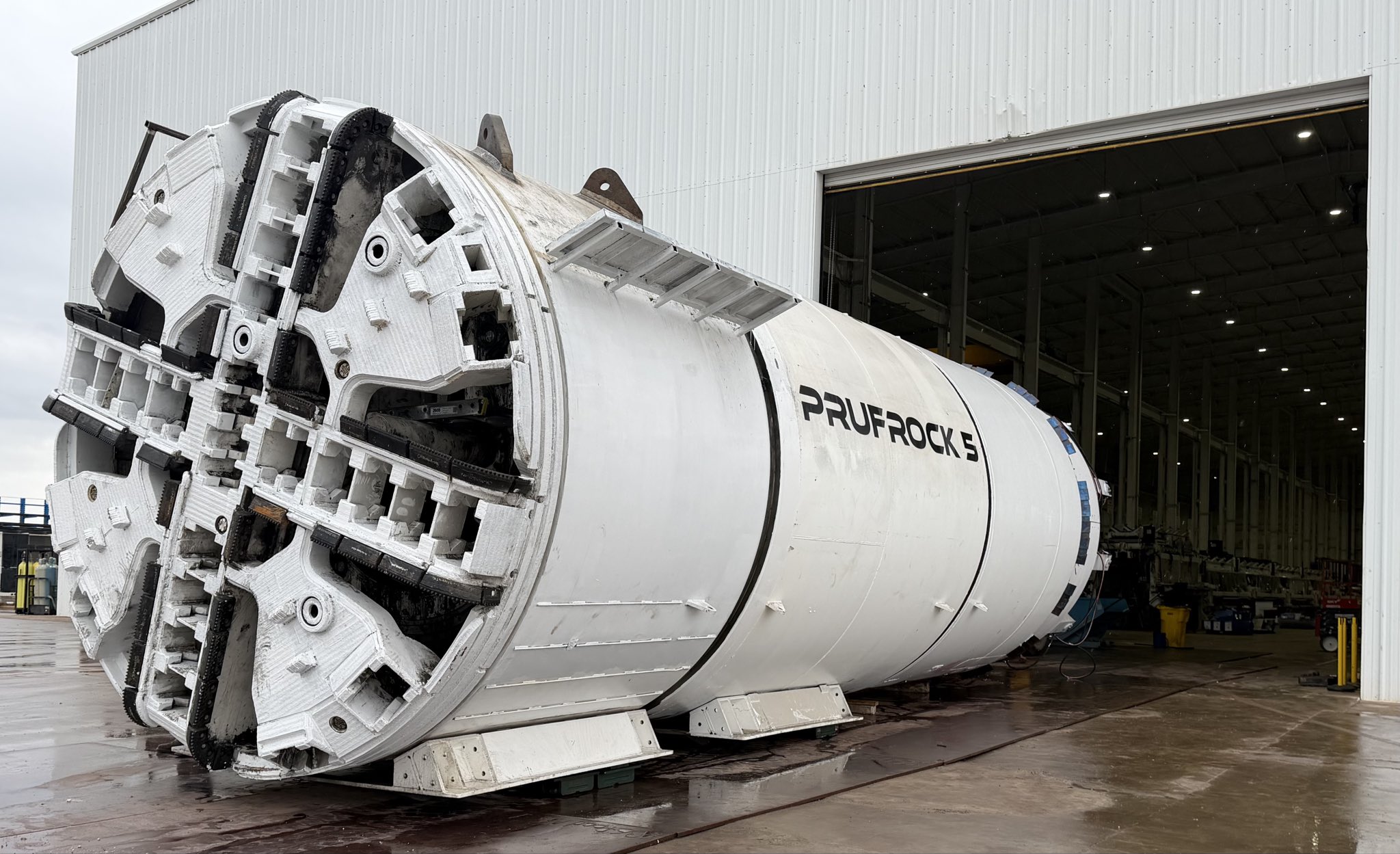
The Boring Company has quietly revealed one of its tunnel boring machines’ (TBMs) most underrated feature. As it turns out, the tunneling startup, similar to other Elon Musk-backed ventures, is also dead serious about pursuing reusability.
Prufrock 5 leaves the factory
The Boring Company is arguably the quietest venture currently backed by Elon Musk, inspiring far fewer headlines than his other, more high-profile companies such as Tesla, SpaceX, and xAI. Still, the Boring Company’s mission is ambitious, as it is a company designed to solve the problem of congestion in cities.
To accomplish this, the Boring Company would need to develop tunnel boring machines that could dig incredibly quickly. To this end, the startup has designed Prufrock, an all-electric TBM that’s designed to eventually be fast enough as an everyday garden snail. Among TBMs, such a speed would be revolutionary.
The startup has taken a step towards this recently, when The Boring Company posted a photo of Prufrock-5 coming out of its Bastrop, Texas facility. “On a rainy day in Bastrop, Prufrock-5 has left the factory. Will begin tunneling by December 1. Hoping for a step function increase in speed,” the Boring Company wrote.
Prufrock’s quiet disruption
Interestingly enough, the Boring Company also mentioned a key feature of its Prufrock machines that makes them significantly more sustainable and reusable than conventional TBMs. As per a user on X, standard tunnel boring machines are often left underground at the conclusion of a project because retrieving them is usually more expensive and impractical than abandoning them in the location.
As per the Boring Company, however, this is not the case for its Prufrock machines, as they are retrieved, upgraded, and deployed again with improvements. “All Prufrocks are reused, usually with upgrades between launches. Prufrock-1 has now dug six tunnels,” the Boring Company wrote in its reply on X.
The Boring Company’s reply is quite exciting as it suggests that the TBMs from the tunneling startup could eventually be as reusable as SpaceX’s boosters. This is on brand for an Elon Musk-backed venture, of course, though the Boring Company’s disruption is a bit more underground.
